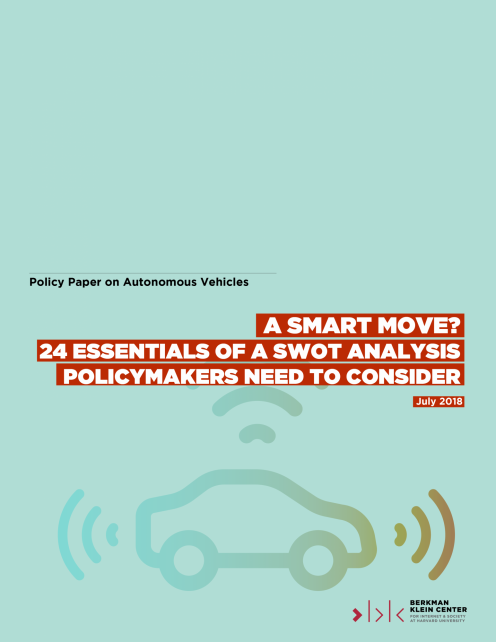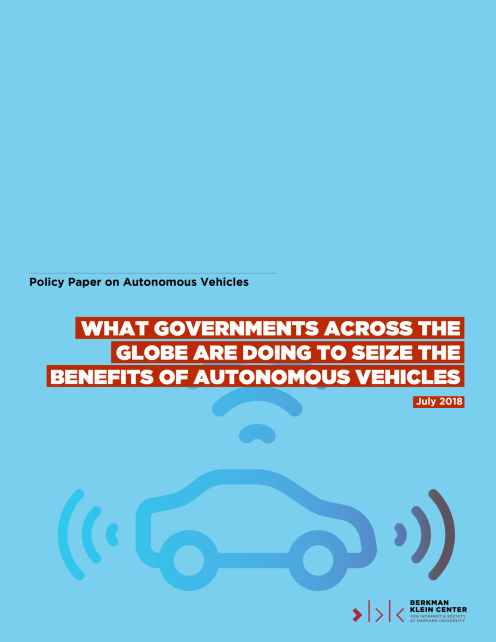
4 Policy Papers on Autonomous Vehicles
As vehicles are increasingly automated, it becomes not only imperative to improve human-machine interaction, but also to anticipate what this means for the future of labor, explore how these vehicles will push the limits of existing governance frameworks as they drive across geographic boundaries, and identify the necessary forms of transparency needed to build new accident liability regimes.
Aida Joaquin Acosta, with researchers from the Berkman Klein Center, are excited to share this series of introductory policy papers on autonomous vehicles (AVs) aimed at policymakers around the globe who are beginning to grapple with the realities of regulating AVs within their jurisdictions. These papers describe key regulatory issues for AVs, a range of policy and governance frameworks, and suggestions for policy innovation and experimentation.
Read more about the papers below, and learn more about our work on the Ethics & Governance of Artificial Intelligence.
5 Technological Factors Regulators And Policymakers Need To Know
Regulators and policymakers are playing an increasingly large role in making decisions about public policy and the regulation of AVs. AVs are more than a vehicle with a camera and a hands-free steering wheel; AVs are a transformative technology. They promise to change the traditional paradigms of mobility, road safety, communication technologies, and conceptions of privacy, as well as challenge ethical norms and change the way humans interact with robots. This policy primer explores these key technological dimensions of AVs, giving an inclusive, high-level view of AV technology, and presents five essential elements policymakers should know.
A Smart Move? 24 Essentials Of A SWOT Analysis Policymakers Need To Consider
This policy primer explores governments’ most relevant strengths, weaknesses, opportunities, and threats (SWOT) in relation to AVs in the form of a SWOT analysis, which may expand policymakers’ governance toolbox and help them design comprehensive policies to proactively address the unintended consequences of AVs. It intends to inform regulators and policymakers, bridging information asymmetries between policymakers and technologists. It also aims at expanding policymakers’ governance toolbox to help them create more effective policies and regulations.
What Governments Across The Globe Are Doing To Seize The Benefits Of Autonomous Vehicles
This policy paper introduces some of the main policy and regulatory actions that are being undertaken in the international arena in relation to AVs. We cover initiatives from the G7 international meetings, the United States, the European Union, Singapore, Japan, South Korea, China, and New Zealand. Learning from one another’s experiences can inspire creative actions and facilitate improved AV policies. However, the impact of the initiatives will depend on the legal, social, and economic environment in which they are developed and implemented. To be successful, each initiative will need to be adapted to the specific context of its region.
3 Practical Tools To Help Regulators Develop Better Laws And Policies
This policy paper analyzes several categories of regulatory challenges surrounding AVs and introduces three practical tools (Legal Interfaces, Law Labs, and Structured Dialogues) that can be utilized by policymakers and regulators in developing effective AV policies.
You might also like
- newsHayley Song Q&A:




